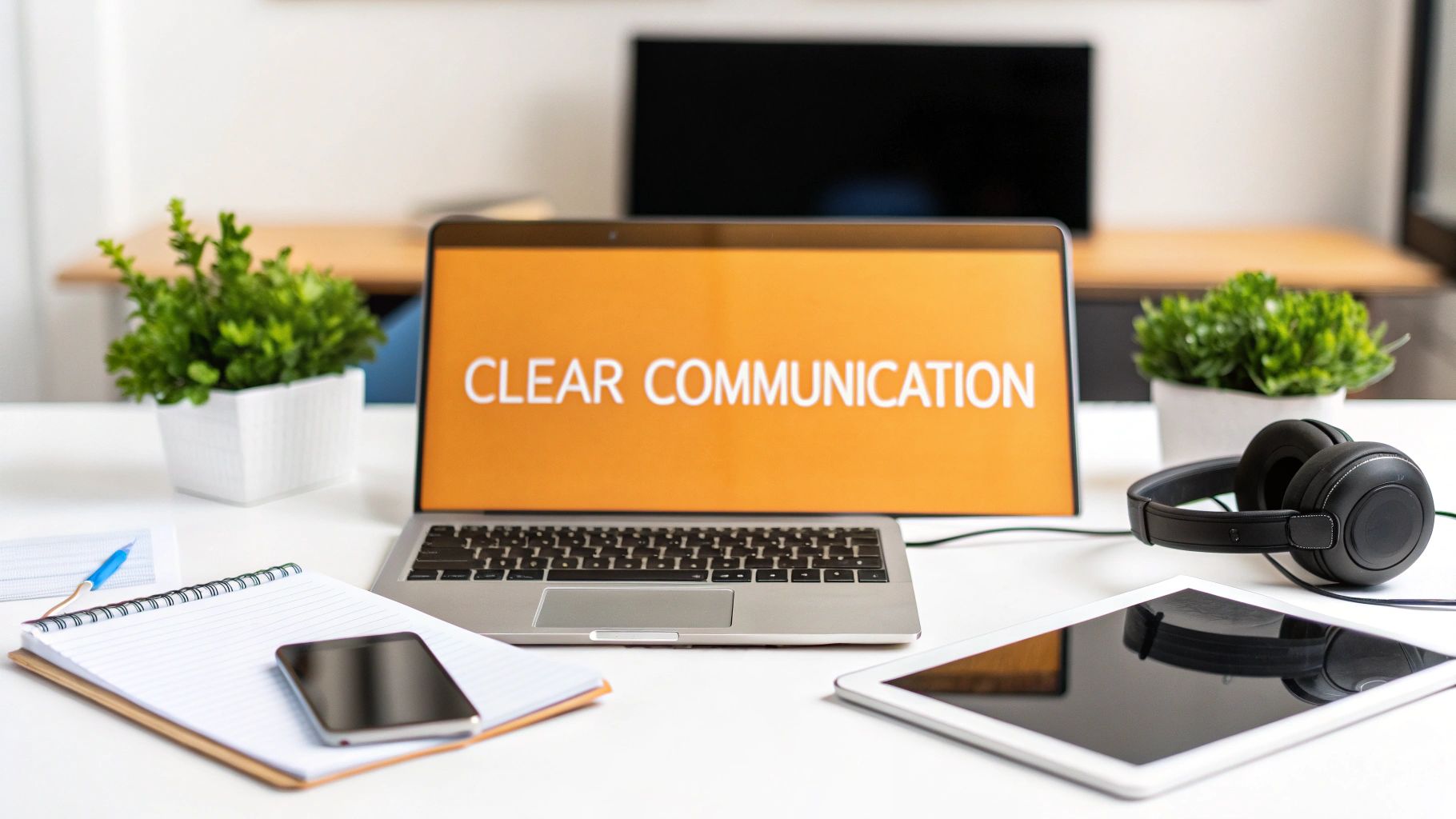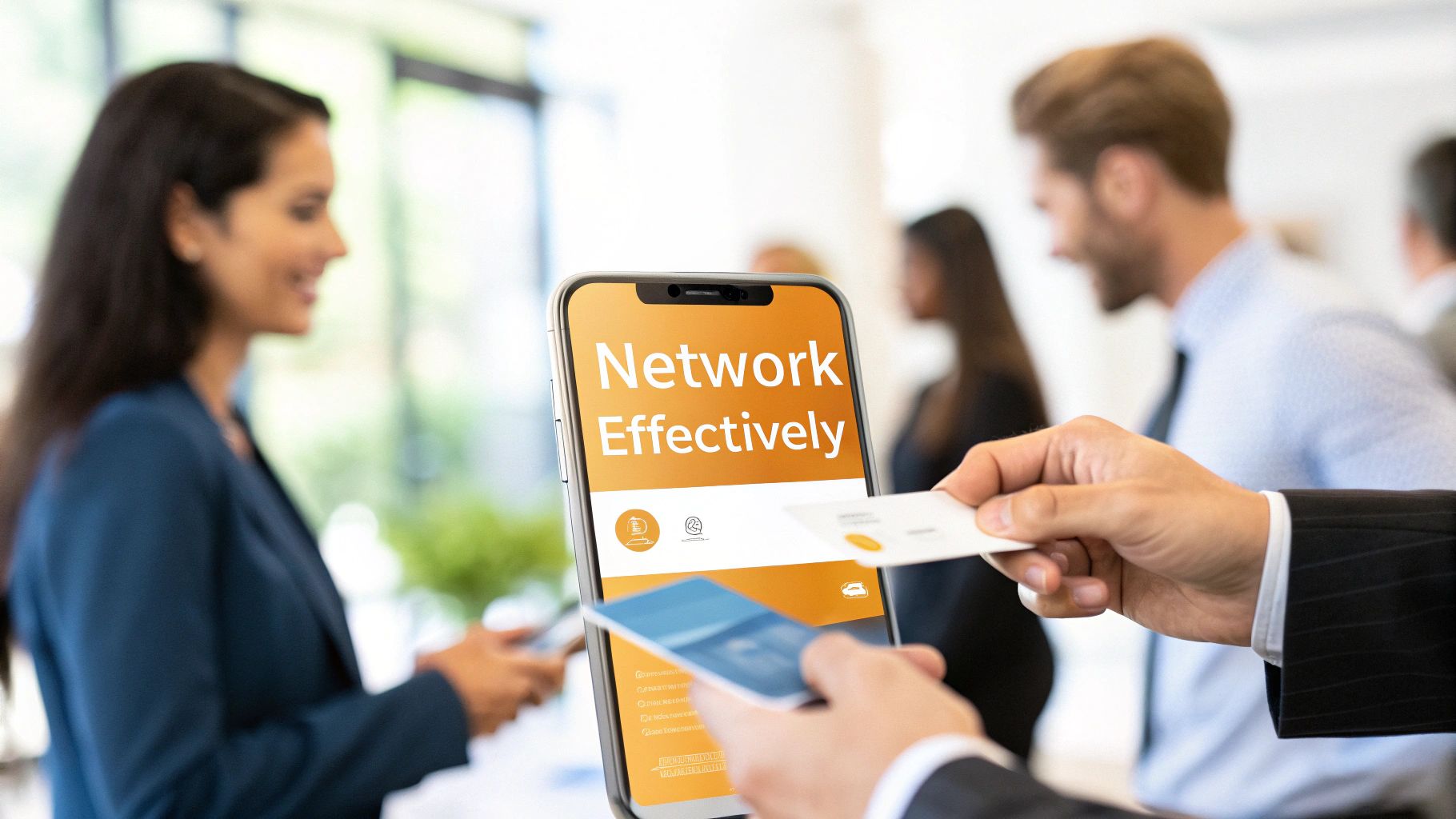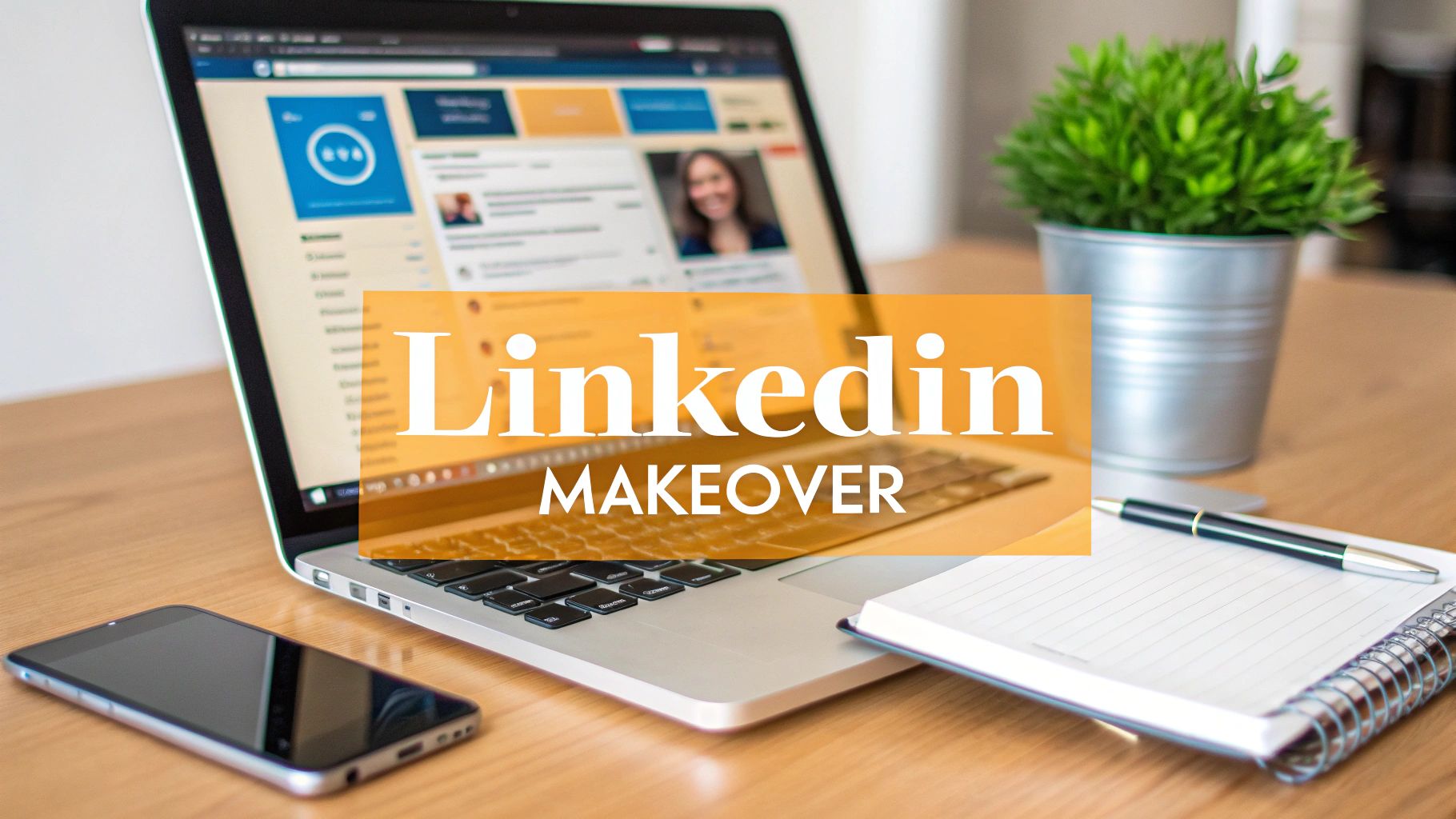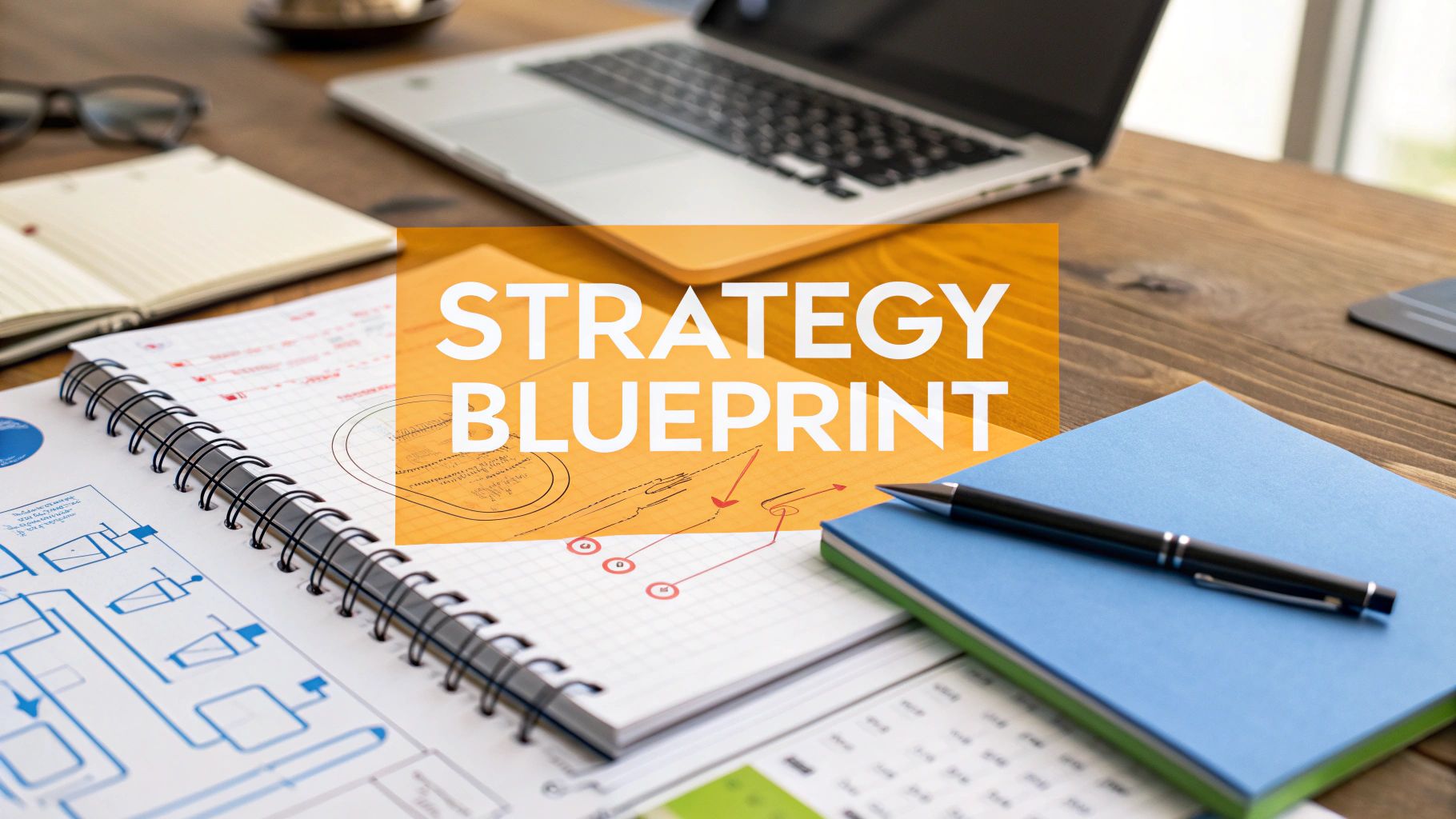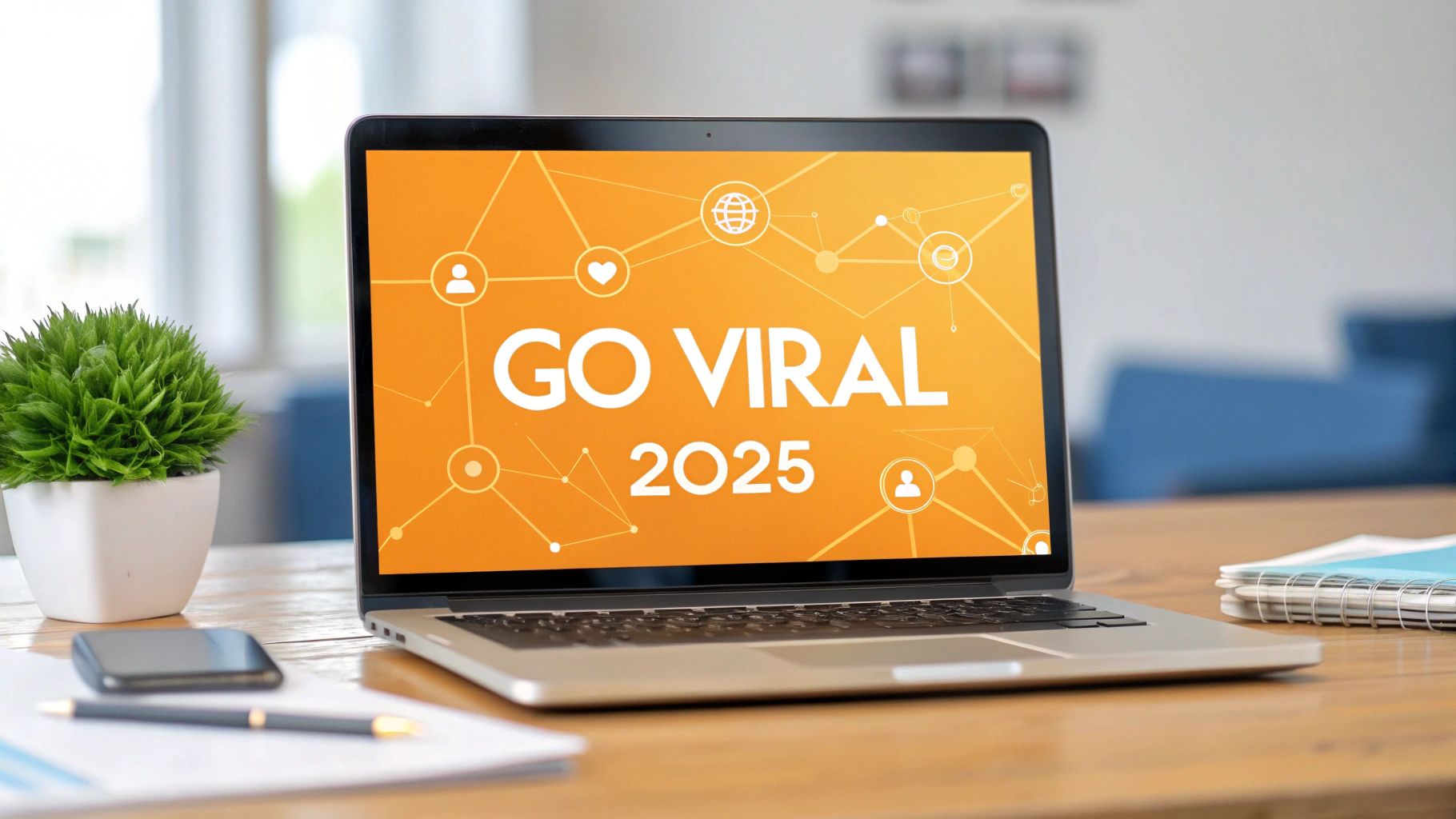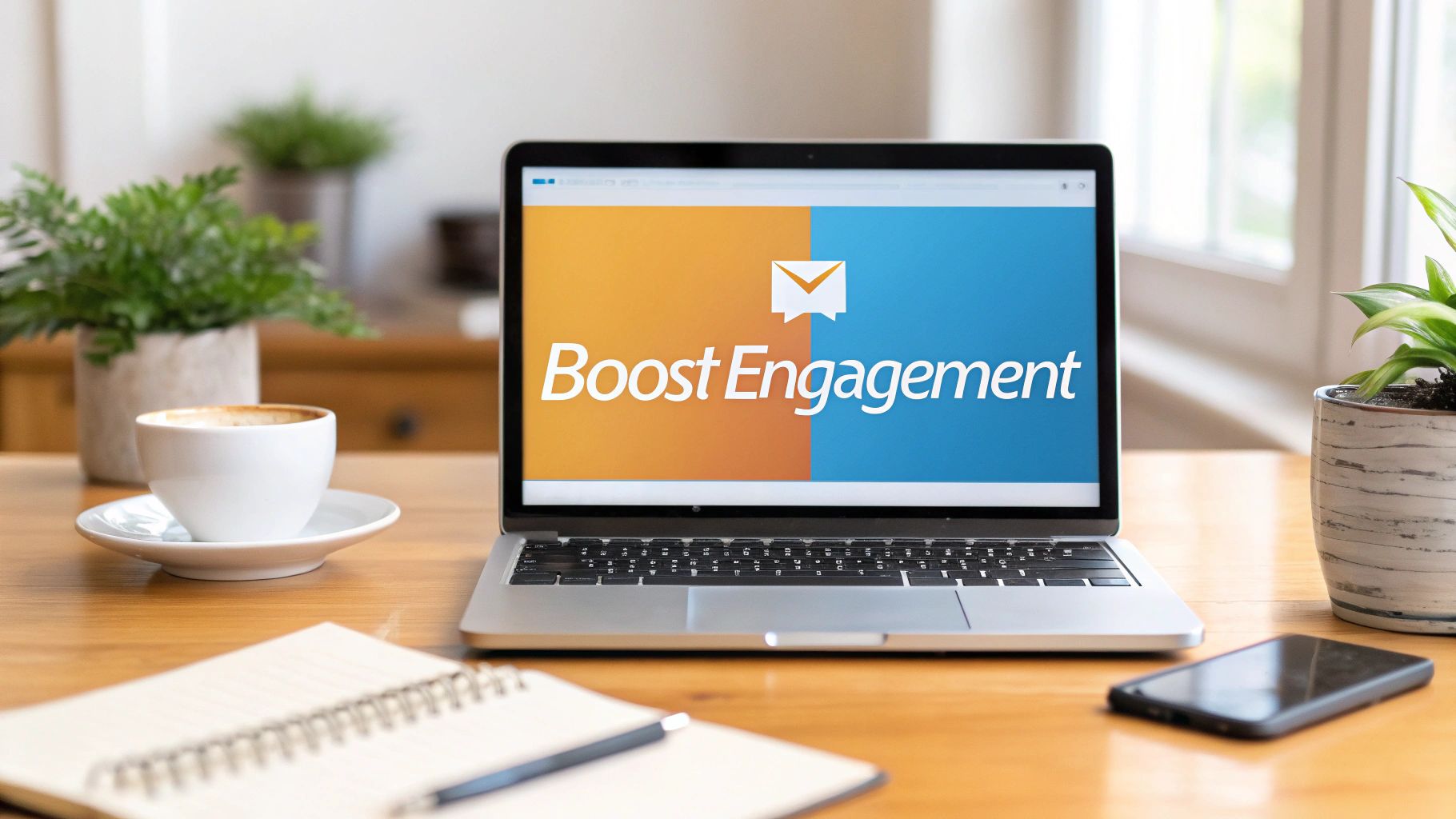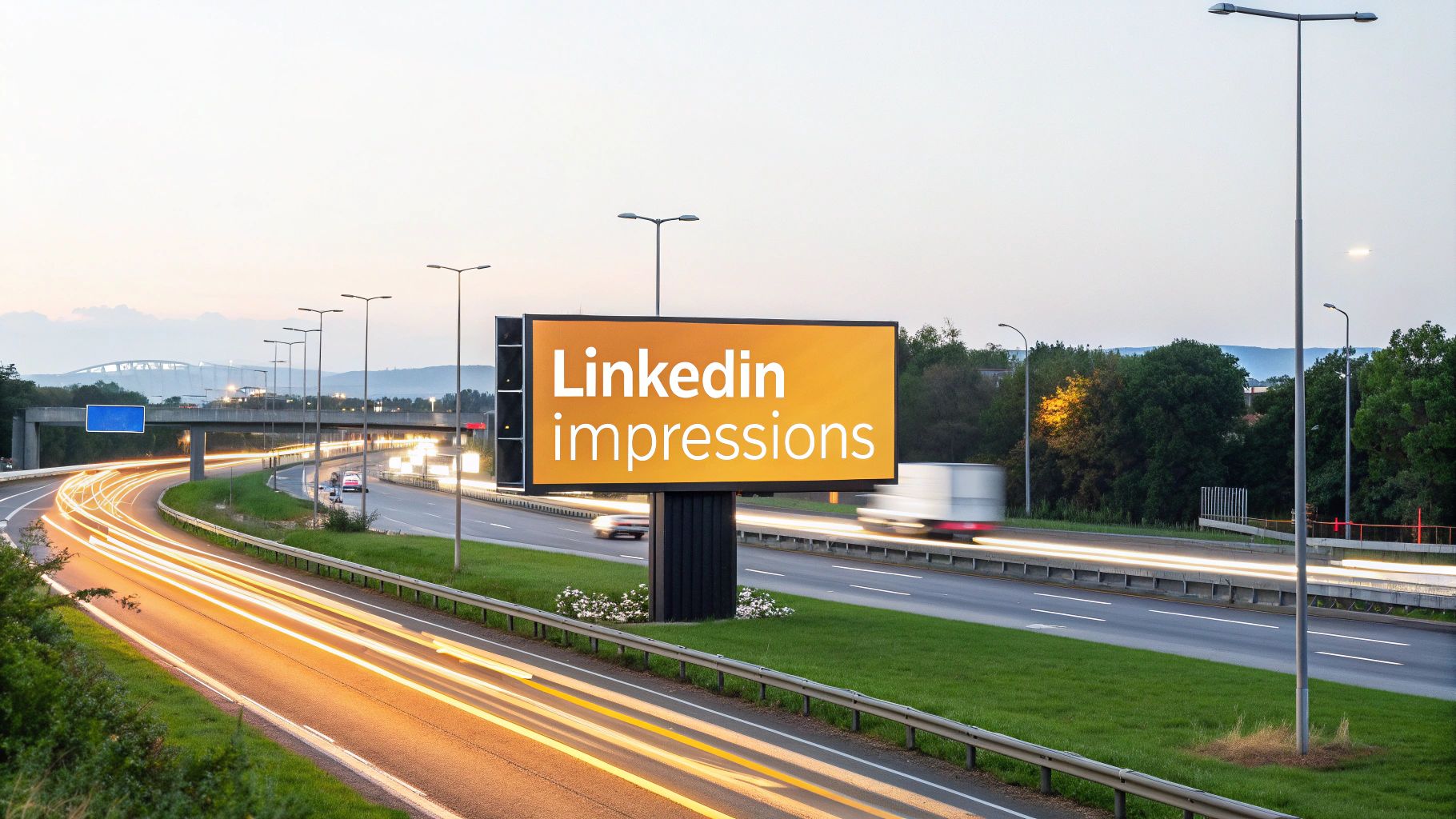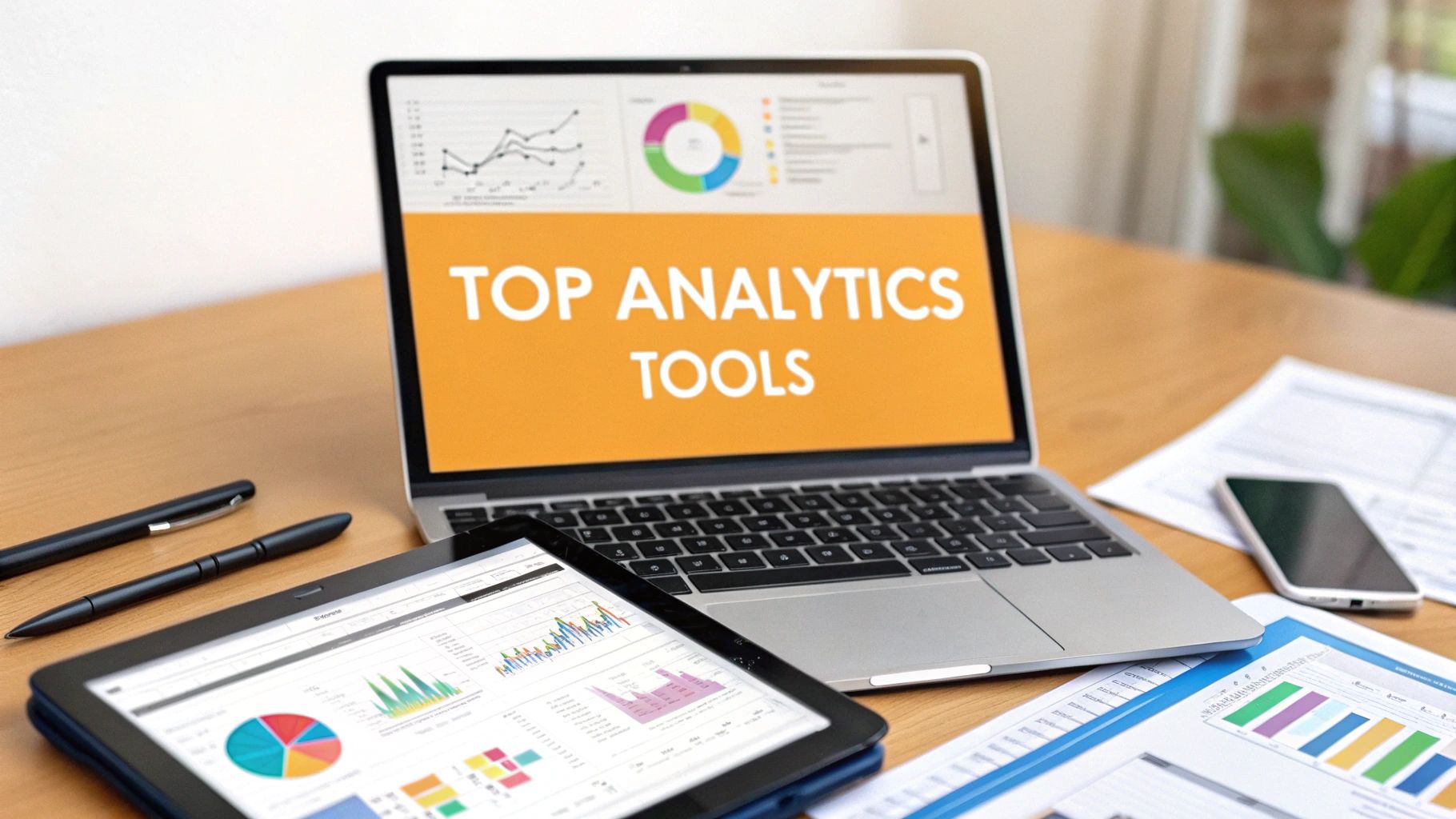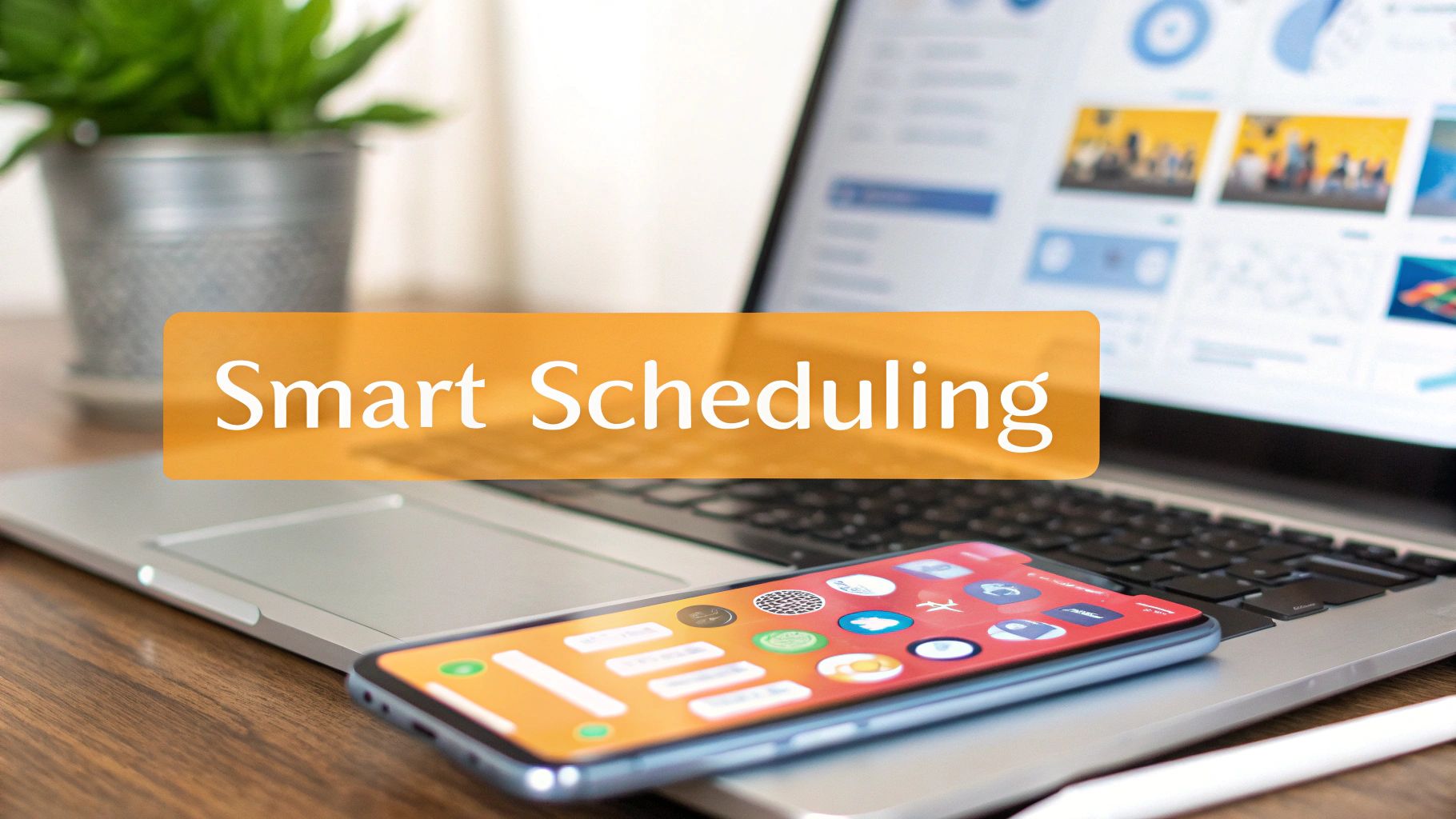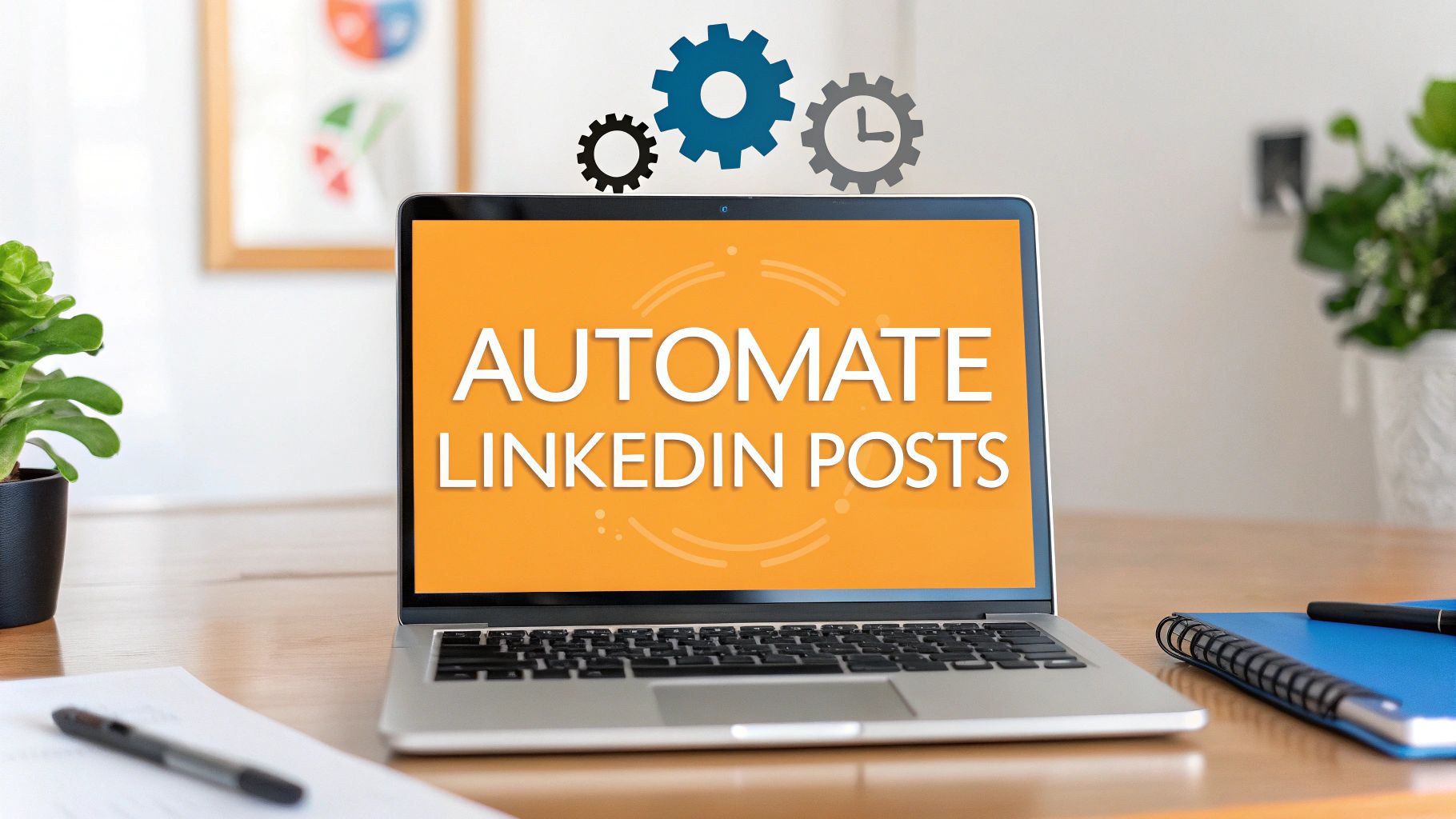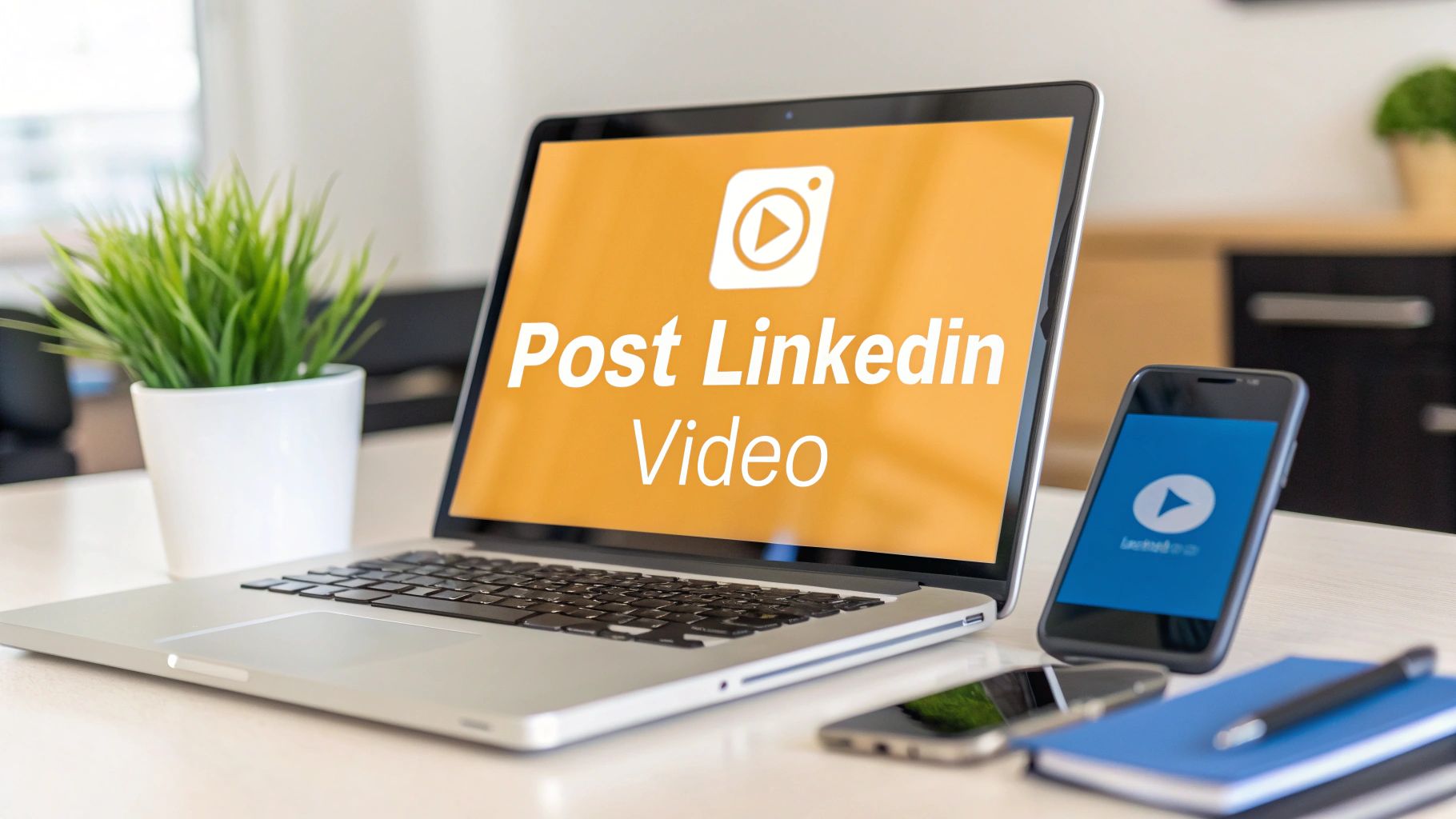You've spent hours, maybe even days, crafting the perfect blog post, video, or whitepaper. It’s insightful, well-researched, and beautifully designed. You hit 'publish' and... crickets. Sound familiar? Here’s the hard truth: creating amazing content is only half the battle. The other, arguably more important half, is getting it in front of the right people. Without a smart plan to share your work, even the best content is just shouting into the void.
This isn't just another list of vague tips. We're breaking down the specific mechanics behind a powerful content distribution strategy that gets results. You’ll learn how to transform your owned media channels into traffic engines, leverage social platforms without just adding to the noise, and turn email lists into dedicated audiences. We'll cover everything from paid advertising and content syndication to tapping into niche communities and activating your own team as brand advocates.
Forget the "publish and pray" approach. This guide unpacks 10 actionable content distribution strategies you can implement today to amplify your reach, drive meaningful engagement, and finally get the ROI you deserve from your content efforts. Let’s dive in and turn your silent masterpieces into conversations that convert.
1. Owned Media Distribution
Owned media distribution is all about leveraging the channels you have complete control over. Think of it as your brand's digital home base: your website, company blog, email newsletter, and even your own mobile apps. This approach is fundamental to a solid content distribution strategy because it gives you the final say on everything from messaging and design to the user experience, all without paying for placement on third-party platforms.
This strategy puts you in the driver's seat, allowing you to build a direct relationship with your audience. You're not at the mercy of algorithm changes or rising ad costs. Instead, you're creating a sustainable asset that grows in value over time, attracting and retaining customers on your own terms.

Why It Works So Well
Owned media is the bedrock of long-term growth. Just look at HubSpot's legendary blog; it's a massive resource library that pulls in millions of visitors and generates leads consistently. Similarly, Patagonia's blog, "The Cleanest Line," strengthens its brand identity and community by sharing stories that align with its mission, completely on its own platform.
Actionable Tips for Owned Media
To make your owned channels work harder for you, focus on these key actions:
- Invest heavily in SEO: Optimize every piece of content to rank for relevant keywords. This ensures a steady, long-term flow of organic traffic without continuous effort.
- Build your email list aggressively: Your email list is a direct line to your most engaged audience. Use content upgrades, pop-ups, and clear calls-to-action to capture subscribers.
- Create cornerstone content: Develop comprehensive, evergreen guides or resources that remain valuable for years. These pieces become pillars that attract links and traffic over time.
- Prioritize user experience: A fast, mobile-friendly website isn't just nice to have; it's essential. A poor experience will send visitors bouncing before they ever see your brilliant content.
2. Social Media Distribution
Social media distribution involves using platforms like Instagram, LinkedIn, TikTok, and X (formerly Twitter) to share your content, engage followers, and reach new audiences. This strategy meets people where they already spend their time, leveraging social sharing mechanics and algorithms to amplify your message far beyond your initial following.
It's a powerful way to build brand personality, drive traffic, and foster a community around your content. When executed well, it can spark conversations and even lead to viral moments, giving your content an exponential reach that other channels can't easily replicate. Understanding the nuances of each platform is crucial, including knowing what it means to go viral on TikTok versus LinkedIn.

Why It Works So Well
Social media excels at creating immediate engagement and building brand affinity. Just look at Duolingo's viral TikToks featuring its owl mascot; they turned a simple language app into a pop culture icon. Similarly, Wendy's witty and often savage Twitter persona has generated massive organic reach and media attention, proving that a strong social voice can be a distribution strategy in itself.
Actionable Tips for Social Media
To maximize your social media distribution, focus on these specific actions:
- Adapt content to native formats: Don't just cross-post. Turn a blog post into a LinkedIn carousel, a key statistic into an Instagram graphic, and a core concept into a short TikTok video.
- Engage actively with your community: Respond to comments and messages promptly. This not only builds loyalty but also signals to platform algorithms that your content is valuable.
- Use platform-specific features: Leverage Instagram Stories, LinkedIn Polls, and live video to boost visibility. These formats are often favored by algorithms and encourage direct interaction.
- Repurpose with a purpose: Take one core piece of content and create multiple social assets from it, each tailored to the platform's audience and style. For a deeper dive, learn more about how to craft an effective LinkedIn post.
3. Email Marketing Distribution
Email marketing distribution is one of the most powerful and direct content distribution strategies available. It involves sending content straight to subscribers' inboxes, leveraging the permission they've given you to communicate with them. This isn't just about spamming promotions; it's about delivering valuable newsletters, automated sequences, and personalized messages to a highly engaged audience.
This strategy transforms your content from a passive asset into an active conversation starter. Unlike social media, you aren't fighting an algorithm for visibility. You own the channel and have a direct line to your audience, allowing you to nurture relationships and guide subscribers through the customer journey on your own terms.
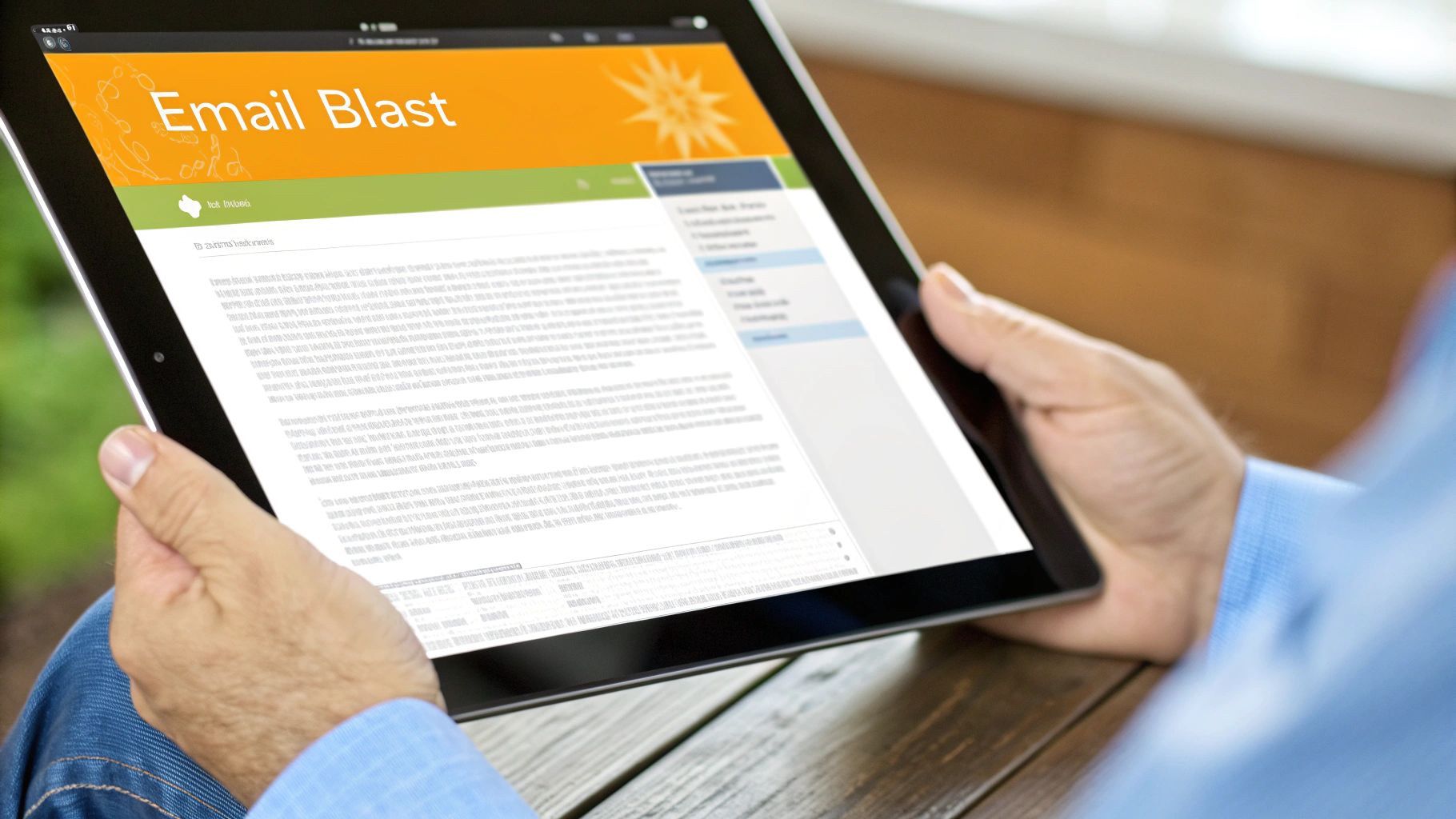
Why It Works So Well
Email marketing delivers an unparalleled return on investment because it reaches people where they are every day: their inbox. Look at Morning Brew, which grew into a media giant by delivering a witty, informative daily newsletter. Similarly, TheSkimm built a massive, loyal following with its conversational news digest, proving that a well-crafted email can become an indispensable part of your audience's daily routine.
Actionable Tips for Email Marketing
To get the most out of your email distribution efforts, focus on these critical actions:
- Segment your list: Group subscribers based on behavior, interests, or demographics. This allows you to send hyper-relevant content that resonates deeply and boosts engagement.
- Obsess over subject lines: Your subject line is the gatekeeper. A/B test different formats, lengths, and emotional hooks to find what drives the highest open rates.
- Provide value, not just sales pitches: Ensure every email offers something useful, whether it's an insightful article, a helpful tip, or exclusive content. This builds trust and keeps subscribers engaged.
- Clean your list regularly: Remove inactive or unengaged subscribers to improve your deliverability rates and ensure your messages are reaching people who want to hear from you.
4. Paid Advertising Distribution
Paid advertising distribution involves putting a budget behind your content to guarantee it reaches a highly specific audience. Instead of waiting for people to find you, you're paying to place your content directly in front of them on platforms like search engines (Google Ads), social media (Facebook, LinkedIn), and display networks. This strategy is all about speed and precision, allowing you to target users based on demographics, interests, and online behavior.
This approach gives you immediate visibility and control over who sees your content, making it one of the most powerful content distribution strategies for generating leads and sales quickly. You aren't just hoping the right people stumble upon your work; you're actively ensuring they do, which is perfect for time-sensitive campaigns or reaching niche markets.

Why It Works So Well
Paid distribution offers unparalleled targeting and scalability. Think of Grammarly's pervasive YouTube pre-roll ads that target writers and students, or Casper's sleek Instagram Stories ads that capture the attention of millennials looking for a better sleep solution. These brands use paid channels to bypass the noise and deliver their message directly to high-intent audiences, driving measurable results.
Actionable Tips for Paid Advertising
To get the most out of your ad spend, focus on a strategic approach:
- Start small and scale: Test different platforms and ad formats with a modest budget. Once you identify what drives results, you can confidently increase your investment.
- A/B test everything: Continuously test your ad copy, headlines, images, and landing pages to find the combinations that convert best.
- Use retargeting: Re-engage users who have visited your website or interacted with your content. These warm leads are often the most likely to convert.
- Align your creative and landing page: Ensure a seamless user experience by making sure your ad's message and visuals match the landing page it directs to.
5. Content Syndication
Content syndication is the practice of republishing your content on third-party websites. It’s a powerful way to get your work in front of a much larger, often new, audience by leveraging the authority and traffic of established platforms like Medium, LinkedIn, or major industry publications. Instead of waiting for people to find you, you take your content to where they already are.
This strategy acts as a force multiplier for your best content. By placing your articles on other sites, you gain brand visibility, earn referral traffic, and can even build valuable backlinks, all while providing useful information to readers who may have never heard of you before. It’s one of the most effective content distribution strategies for extending reach without creating new material from scratch.
Why It Works So Well
Syndication puts your content on a bigger stage. Buffer, for example, successfully republished their blog content on platforms like Medium and Fast Company, reaching millions of new readers and driving significant traffic back to their site. Similarly, major publications like Harvard Business Review syndicate their articles to LinkedIn, tapping directly into a massive professional audience.
Actionable Tips for Content Syndication
To make syndication a successful part of your strategy, follow these key steps:
- Wait before you syndicate: Allow search engines to index your original article first, usually about one to two weeks, to ensure you get the initial SEO credit.
- Insist on a canonical tag: This is non-negotiable. A canonical tag (
rel="canonical") tells Google that your site is the original source, preventing duplicate content penalties. - Choose relevant partners: Syndicate your content on sites where your target audience actually spends their time. Quality and relevance trump quantity.
- Include clear attribution: Make sure the syndicated post includes a clear statement and link back to the original article on your site to drive referral traffic.
- Track your results: Use UTM parameters to monitor how much traffic your syndicated content is sending back to your website and which partners are most effective.
6. Influencer and Partnership Distribution
Influencer and partnership distribution taps into the trust and reach of established voices in your niche. Instead of building an audience from scratch, you collaborate with individuals or complementary brands to share your content with their loyal followers. This strategy effectively "borrows" the credibility and audience of a partner to amplify your message and drive new traffic.
This approach is one of the most powerful content distribution strategies because it leverages social proof. When a respected influencer or brand shares your content, it acts as a powerful endorsement. It's a way to break through the noise and get your content in front of a highly relevant and engaged audience that might have otherwise never discovered you.
Why It Works So Well
This strategy excels at building brand trust and reaching hyper-targeted audiences quickly. Look at Gymshark's athlete ambassador program; they partner with fitness influencers who authentically use their products, turning them into powerful distribution channels. Similarly, Adobe's collaborations with creative YouTubers showcase their software in action, providing value to the creator's audience while promoting Adobe's tools to the perfect demographic.
Actionable Tips for Influencer and Partnership Distribution
To execute this strategy effectively, focus on authentic and mutually beneficial collaborations:
- Vet partners for engagement, not just followers: A high follower count is meaningless without an engaged community. Look at comment quality and audience interaction.
- Focus on micro-influencers for better ROI: Influencers with 10K-100K followers often have more niche, dedicated audiences and deliver higher engagement rates for a lower cost.
- Create clear partnership agreements: Outline deliverables, timelines, and compensation to ensure both parties are aligned and avoid misunderstandings.
- Build long-term relationships: Treat your collaborations as true partnerships, not one-off transactions. This fosters deeper loyalty and more authentic promotion over time. For example, building long-term relationships on platforms like LinkedIn can lead to powerful co-marketing opportunities. You can learn more about how to get more connections on LinkedIn.
7. SEO-Driven Organic Search Distribution
SEO-driven organic search distribution is the art and science of getting your content to the top of search engine results. Instead of paying for clicks, you earn them by optimizing your content to be the best answer for what people are actively looking for on Google, Bing, and other search engines. This strategy turns your content into a magnet for high-intent traffic, drawing in users who are already seeking solutions.
This approach is one of the most powerful long-term content distribution strategies because it creates a sustainable, compounding asset. A top-ranking article can generate traffic and leads for years with minimal ongoing effort, making it a highly efficient way to build brand authority and connect with your target audience at the exact moment they need you.
Why It Works So Well
SEO taps directly into user intent, delivering your content to an audience that is already looking for it. Just look at NerdWallet, which dominates highly competitive financial search terms by creating incredibly comprehensive comparison content. Similarly, Healthline has become the go-to source for health information by meticulously optimizing its articles to meet Google's strict E-E-A-T (Experience, Expertise, Authoritativeness, and Trust) guidelines.
Actionable Tips for Organic Search
To turn search engines into a primary distribution channel, focus on these core actions:
- Target long-tail keywords: Focus on specific, multi-word phrases that signal clear user intent. These are less competitive and often convert better.
- Create topic clusters: Build your content around central "pillar" pages linked to related, in-depth "cluster" articles. This signals your authority on a topic to search engines.
- Optimize for featured snippets: Structure your content with clear headings, lists, and concise answers (like a Q&A) to capture the coveted "position zero" in search results.
- Prioritize E-E-A-T: Showcase your expertise, build authoritativeness with quality backlinks, and prove your trustworthiness. This is non-negotiable, especially for high-stakes topics. For those aiming to master search engine visibility, delve into proven strategies to increase organic search traffic to refine your approach.
8. Community and Forum Distribution
Community and forum distribution involves sharing your content where your target audience already gathers. This means tapping into platforms like Reddit, Quora, industry-specific forums, Facebook Groups, and Slack communities. Instead of building an audience from scratch, you’re adding value to existing conversations, which is one of the most organic content distribution strategies.
This approach is all about participation, not promotion. You’re becoming a helpful member of a community first and a marketer second. When done right, you build genuine authority and trust, driving highly relevant traffic back to your content from people who are genuinely interested in what you have to say.
Why It Works So Well
This strategy is incredibly effective for reaching niche audiences with laser focus. For example, Buffer famously gained its first users by engaging authentically in tech communities like Hacker News. Similarly, Notion’s community-led growth was supercharged by users sharing templates and tips in dedicated Reddit subreddits, creating a powerful, self-sustaining distribution loop.
Actionable Tips for Community and Forum Distribution
To leverage communities without getting banned for spam, follow these essential steps:
- Provide value first, promote later: Follow the 90-9-1 rule. Spend 90% of your time engaging and helping, 9% sharing others' relevant content, and only 1% sharing your own.
- Respect the rules: Every community has guidelines. Read and follow them meticulously to avoid being seen as a self-serving spammer.
- Answer questions directly: Instead of just dropping a link, use your content to provide a direct, helpful answer within the platform itself. Link back for more detail.
- Tailor content to the community: Create content or frame your existing pieces specifically to address the unique interests and pain points of each community you join.
9. Video Platform Distribution
Video platform distribution is all about creating and sharing video content on platforms where visual content reigns supreme, such as YouTube, TikTok, and Instagram Reels. This strategy taps into the massive and ever-growing audience of video consumers, leveraging powerful recommendation algorithms to place your content in front of highly engaged viewers.
By treating platforms like YouTube as a search engine and social hubs like TikTok as entertainment channels, you can build a dedicated following. It's a key part of modern content distribution strategies because it captures attention in a dynamic, high-impact format, making your brand more human and relatable.
Why It Works So Well
Video builds connection and authority faster than almost any other medium. Look at MrBeast, who turned YouTube into an empire by mastering viral-worthy concepts and viewer retention. Similarly, Shopify’s YouTube channel provides immense value to entrepreneurs, establishing the brand as an indispensable resource, not just a software provider.
Actionable Tips for Video Platforms
To maximize your reach and engagement on video platforms, focus on these key actions:
- Hook viewers immediately: You have about three seconds to capture attention. Start with a compelling question, a surprising statement, or a quick preview of the video's best moment.
- Optimize for search and discovery: Treat your video titles, descriptions, and tags like you would for SEO. Use relevant keywords people are searching for on platforms like YouTube.
- Create compelling thumbnails: A great thumbnail is often the single biggest factor in a viewer's decision to click. Use bold text, expressive faces, and clear imagery to stand out.
- Repurpose content strategically: Turn one long-form video into dozens of short-form clips for TikTok, Reels, and Shorts. This maximizes your content's lifespan and reach across different platforms. Even professional networks are embracing video, so it's worth learning how to post a video on LinkedIn to capture that audience.
10. Employee Advocacy Distribution
Employee advocacy distribution mobilizes your team to share company content across their personal social media channels, turning them into authentic brand ambassadors. This strategy leverages the collective networks of your employees, tapping into a wellspring of trust and reach that branded accounts often can't match. It’s one of the most organic content distribution strategies available.
This approach transforms your content from a corporate broadcast into a trusted recommendation from a friend or colleague. By empowering your team to share, you amplify your message authentically, reaching new audiences and building credibility from the inside out. It's a powerful way to humanize your brand and extend your reach exponentially.
Why It Works So Well
Trust is the ultimate currency, and people trust recommendations from other people far more than they trust brands. Just look at Dell's program, which engaged over 10,000 employees to become social media advocates, dramatically increasing their social reach. Similarly, Adobe's employee amplification strategy helps its content cut through the noise by leveraging the professional credibility of its own experts.
Actionable Tips for Employee Advocacy
To build a thriving employee advocacy program, focus on making it easy and rewarding:
- Make it voluntary and fun: Never mandate participation. Instead, create an inviting program and use gamification or rewards to recognize top advocates.
- Provide ready-to-share content: Use an advocacy platform or a simple content hub to give employees pre-vetted articles, posts, and graphics they can share with a single click.
- Encourage personalization: Ask employees to add their own commentary or insights when they share. This makes the content feel more genuine and less robotic.
- Offer clear guidelines: Create a simple social media policy that outlines best practices and protects both the employee and the company, without stifling their voice.
Content Distribution Strategies Comparison
| Distribution Type | 🔄 Implementation Complexity | ⚡ Resource Requirements | 📊 Expected Outcomes | 💡 Ideal Use Cases | ⭐ Key Advantages |
|---|---|---|---|---|---|
| Owned Media Distribution | Medium to High - requires technical setup, consistent content creation | Medium - content team, hosting, SEO tools | Long-term audience growth, SEO benefits, brand equity | Businesses focused on long-term audience building and with resources for infrastructure | Full control of content & data, cost-effective long-term asset, customizable |
| Social Media Distribution | Medium - requires platform adaptation, content repurposing | Medium - content creators, social managers | Potential viral reach, real-time engagement | B2C brands, consumer-focused, targeting younger demographics | Access to large active audiences, built-in engagement, lower entry barrier |
| Email Marketing Distribution | Medium - setup automation & segmentation | Medium - email platform, content creators | High ROI, engaged permission-based audience | B2B, service providers, longer sales cycles needing nurturing | Highest ROI, direct access without algorithms, measurable detailed analytics |
| Paid Advertising Distribution | High - requires ongoing optimization and budget management | High - advertising spend, expert campaign management | Immediate traffic and scalable reach | Companies needing fast results, product launches, budgeted campaigns | Immediate results, precise targeting, predictable ROI, overcomes organic limits |
| Content Syndication | Low to Medium - involves coordination with partners, SEO tagging | Low to Medium - content republishing effort | Increased reach and backlinks, brand authority | B2B, thought leaders, publishers with extensive content libraries | Multiplies reach cost-effectively, builds authority, generates backlinks |
| Influencer and Partnership Distribution | Medium - requires partner vetting, collaboration management | Medium - influencer fees, coordination effort | High-quality engagement, expanded audiences | Consumer brands, lifestyle, fashion, beauty, tech sectors youth-oriented | Authentic endorsements, cost-effective vs paid ads, strategic relationships |
| SEO-Driven Organic Search Distribution | High - continuous optimization, technical expertise needed | Medium - SEO tools, content creation team | Sustainable long-term high-intent traffic | Publishers, SaaS, e-commerce, service providers targeting search intent | High-intent traffic, no ongoing pay, compounding ROI, trust and authority |
| Community and Forum Distribution | Medium - time-intensive, authentic engagement required | Low - participation effort and content adaptation | Highly targeted engagement, reputation building | Startups, SaaS, niche B2B, technical products | Low cost, direct feedback, viral potential, builds expertise reputation |
| Video Platform Distribution | High - involves video production skill and consistent publishing | High - production equipment, editing, creative talent | Strong engagement, visual storytelling, broad reach | B2C, educators, entertainers, product demos, younger audiences | High engagement, strong algorithmic growth, monetization potential |
| Employee Advocacy Distribution | Medium - needs employee training and content programs | Medium - advocacy platforms, training, content support | Amplified reach, authentic trust, increased employee engagement | B2B, enterprises, professional services with engaged employees | 8x engagement vs brand channels, authentic, expands reach via networks |
Putting It All Together: Your Next Steps
Whew, that was a lot. We’ve journeyed through ten distinct landscapes of content distribution, from the familiar territory of your own blog and social media feeds to the powerful, collaborative realms of influencer marketing and content syndication. It’s easy to look at this comprehensive list of content distribution strategies and feel a wave of analysis paralysis wash over you. But here’s the secret: you don't need to do everything.
The most successful content marketers aren’t jacks-of-all-trades; they are masters of a few key channels that resonate deeply with their specific audience. Your goal isn't to be everywhere at once. It's to be exactly where your audience is, consistently and effectively. The true power lies in selecting the right tools for the job at hand.
From Overwhelmed to Action-Oriented
So, how do you move forward without trying to boil the ocean? It’s all about a strategic, phased approach. Instead of trying to implement all ten strategies tomorrow, focus on creating a realistic, high-impact plan.
Here are your actionable next steps:
- Identify Your Power Channels: Review your audience personas and business goals. Where do your ideal customers spend their time? Are they scrolling LinkedIn, asking questions in niche forums, or searching for solutions on Google? Pick just two or three channels from our list that offer the most direct line to them.
- Start Small and Test: For each chosen channel, create a mini-campaign. If you're focusing on Social Media and Employee Advocacy, turn your latest blog post into a series of five distinct LinkedIn updates. If you're testing Community Distribution, find three relevant Reddit or Slack communities and share your content in a helpful, non-promotional way.
- Measure and Iterate: Track your results. Which channels drove the most traffic? Which ones generated the most engagement or leads? Use this data not as a final judgment, but as a compass. Double down on what's working and don't be afraid to pivot away from what isn't.
Remember, creating great content is only half the battle. The other half, the part that drives real business results, is ensuring that content gets seen. Mastering a few targeted content distribution strategies is the difference between writing for an audience of one and building a community around your brand. Your best ideas deserve a powerful megaphone. Now, it's time to choose yours and start broadcasting.
Ready to streamline your social media distribution and employee advocacy efforts? Let RedactAI do the heavy lifting by transforming your long-form content into dozens of high-impact social posts in minutes. Stop manually repurposing and start maximizing your reach by visiting RedactAI to see how it works.






